How to build a successful Product Recommendation Quiz
16-9-2021 eCommerce Tips & TricksBuilding a simple product selector for your eCommerce store can take only a few clicks with the Product Recommendation Quiz app. There’s a number of design and content templates tailored specially for the beauty industry (skin care quiz, hair care quiz, lipstick match finder).
While making the quiz is easy, ensuring that it serves both your audience and your business requires a bit of experience. At RevenueHunt, we’ve analyzed countless successful product recommendation quizzes. We’ve identified elements which make them popular with the online shoppers and loved by the brands. In this article, we’ve gathered all this knowledge to give you a head start in building your first product selector.
Here’s a list of ten things every Product Recommendation Quiz should have (and how to add them):
Make the quiz visible
(publish on the header, publish in multiple locations)
You can have the most beautiful and thought-through quiz in the world but it won’t be useful if your customers cannot find it. Just like a real-life shop attendant, the quiz should reach out to the customers to ask ‘Is there anything I can help you with?’. Product Recommendation Quiz app allows you to Publish your quiz in several places on the website. You can embed a link in your website’s menu, add a ‘Take the Quiz’ button, publish the quiz inline with your website or add a pop-up when a new customer visit’s your site for the first time. Most popular quizzes are embedded in several ways onto the website to help customers at different stages of their shopping journey. For example, a well designed banner at the header of the website showcases the quiz as a novelty and spikes curiosity. A small button next to a lipstick collection can help the customer select a shade that’s just right for their complexion.
A link in the website’s menu makes the quiz easy to find, after browsing through the contents.
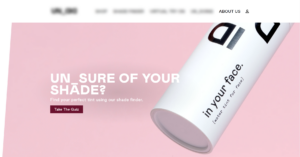
Ensuring that the quiz is easy to find can make a big difference in your sales conversions. Most quiz takers try the quiz a few times before completing the purchase. Make the quiz visible and you’ll see the sales go up!
Match the store’s design
(Design: match stores font and color scheme, use a background image, CSS)
You know this already. A beautifully designed website sells better than a generic one and so does the quiz! A Product Recommendation Quiz can match your store’s look and feel to the finest details. In the Quiz Design tab you can adjust the quizz’s font, colors, add a background image or even add custom CSS code. WIth CSS you can customize every element of the quiz, from the general layout to the shape of the buttons. You can edit the quiz as well as the Results Page. Check out these beautiful customization examples to gather inspiration for your next quiz project!
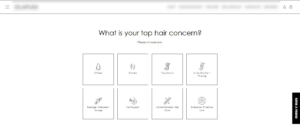
Come up with a professional name for the quiz
(Eg. “Shade Finder”, “Personalized Skin Prescription”, “Routine Builder”, “Skin Test”)
Let’s talk names now. When you hear the word ‘quiz’, what is the first thing that comes to mind? To most people a quiz is either a dreadful school memory or a lighthearted ‘Which animal are you?’ entertainment. The truth is, the word quiz doesn’t have the best reputation, but fortunately you don’t have to stick with it. Finding the right name for your quiz can sometimes be key to getting more conversions. A ‘Shade finder’, a ‘Skincare Routine builder’, ‘Skin Diagnostic’, ‘Hair Analysis’ sound more like a professional questionnaire than entertainment, don’t they? The secret is in the name, so try to find something that fits your brand well and provides value for the customer. If you’re not sure what to choose, think about your customer’s most asked questions and start there.
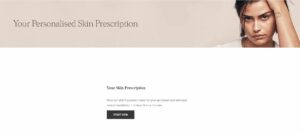
Add personalized advice
(Jump logic)
One way to make the quiz more than just a product selector is to add personalized advice based on customer answers. A skincare shop would probably recommend a different product to customers with dry and oily skin. What if along the way they could also get some tips and tricks on how to take care of their skin? This can be easily done in the Product Recommendation Quiz app with Jump Logic or Skip Logic. With logic, you can send customers down different answering paths, and show or hide content based on their answers. Does your customer have dry skin? Ask them about their primary skin concerns and skip the questions meant for oily skin. Your customer suffers from hair loss? Ask them about the primary cause (medication, genetic conditions, lifestyle) and base your recommendation off-of their answers. Logic can be a powerful tool that makes the shopper feel like they are talking to a real expert with years of experience.
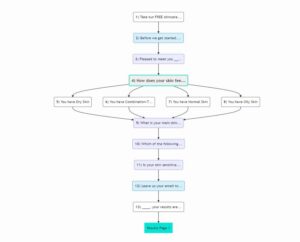
The same logic can also be applied to the contents of the Results Page. A different content block can be shown to customers with dry skin and oily skin. A different advice can be given to customers with colored or natural hair. The Results Page is also a great place to give additional “how to use” advice or even add a prediction on how their skin will improve in the months/weeks of using the product (all depending on the customer skin type).
Use descriptive pictures to help customers decide
(Design your own icons & add picture questions)
It is not always easy to know whether you have dry or oily skin, whether your complexion is light or dark, what exactly your hair-color is called… There’s no better way to help the customer choose than by showing them an example. Adding a Picture question to the Product Recommendation Quiz can be a great way to help the customer pick the right answer and help them make an educated purchasing decision. You can add real-life examples for your customer’s to relate to or design your own beautiful icons which will match your store’s style. A visual quiz gets more completions than a fully-text based one, so make sure to include some images!


Check this video, to see how to add a Picture question to your Product Recommendation Quiz.
Keep it short
(Max 5-6 questions)
This is probably the most important piece of advice on this list. No matter what you do, if your Product Recommendation Quiz is too long, you’ll not see the desired effects. Our research shows that most successful quizzes have max. 5-6 questions. In other cases, customers typically drop out after question 8 and almost nobody gets to question 12. There’s power in simplicity! Even if your quiz has some branching, make sure that the total time they spent on the quiz is less than 1-2 minutes.
Limit the recommended products
(1-2, or 1 for each type)
The less choice we have, the less time we spend deciding and the higher the chance we’ll buy. Restaurants know this and so should you! What is the point of the quiz if you end up with 10 results from which you still need to choose? A successful quiz recommends a single product that ticks all the customer’s boxes, or a full routine with a single product for each step. If possible, try to limit the number of recommendations to a bare minimum and see the revenue grow.
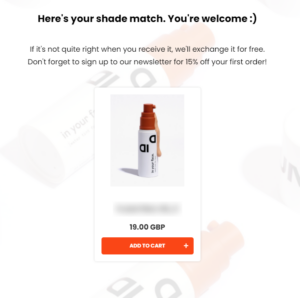
Make it personal
(Recall names & answers)
Want to make the shopping experience ultra personal? Product Recommendation Quiz app lets you use the information provided by the customer and add it to various parts of the quiz. You can, for example, ask for a person’s name and recall the answer in the next question, on the Results Page or even in the follow up email. Information Recalls are a powerful tool which makes your quiz look professional, while actually being very simple to implement. Take a look at this example of a haircare quiz:
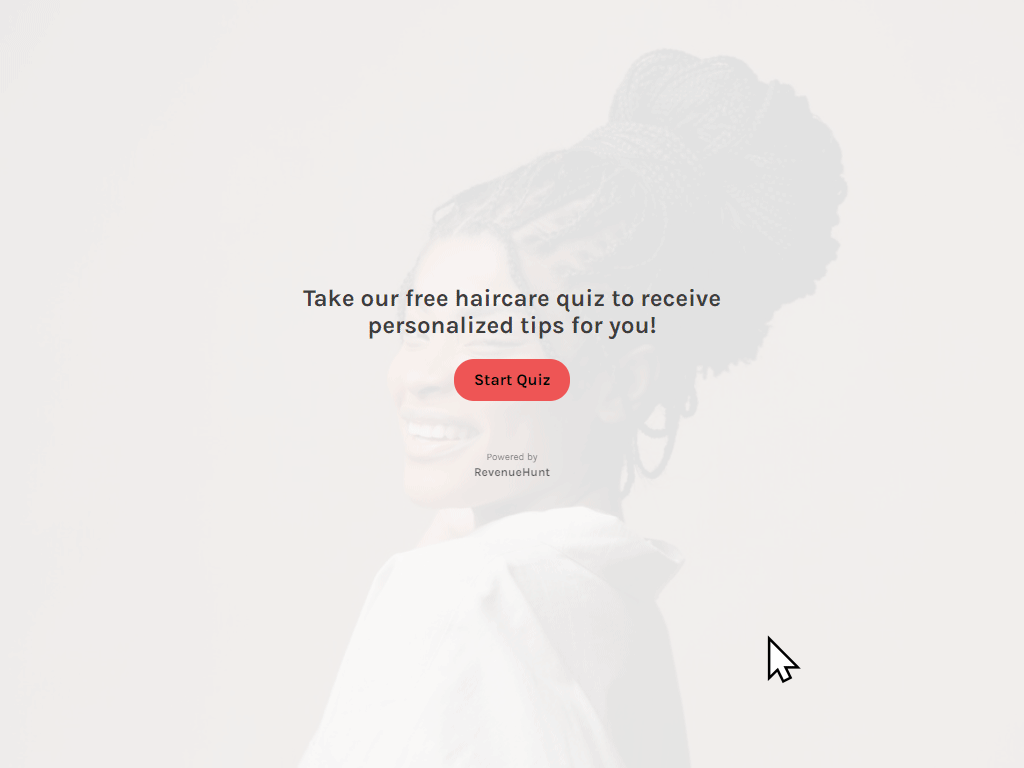
Send results to the customer if they want
(Email, Klaviyo, Omnisend, Mailchimp…)
A well-structured sales funnel, with a Product Recommendation Quiz and a targeted email campaign, can lead to 50% higher conversions. You can read more about it in our previous blog posts. A quiz can serve as an excellent lead collector. Not only are you able to get email addresses or phone numbers via the quiz, but you can also segment your audience based on their quiz answers and follow up with an email tailored to their needs. Think about a marketing campaign focused on people living in large urban areas, where a proper morning or evening skin routine is especially important for a clear complexion. Big brands know that a swift follow up is crucial to maintaining the customer’s attention. With the Product Recommendation Quiz, you’re able to send quiz results directly to the customer seconds after completing the quiz. You can even connect your quiz to Klaviyo and send the customer a full list of results including product pictures, descriptions, discount codes or instructions for use.
While collecting emails is a very important part of a sales, some customers prefer to take time before trusting your brand with this information. Some customers will leave immediately and some just want to see the results. To ensure the quality of the leads generated by the quiz the Product Recommendation Quiz app allows you to make the email question optional or even give a customer a choice if they want to see it or not.
Offer a discount after completing
(Automatic discounts)
This one is simple but effective! You want to reward your customers for taking a minute of their time filling in all this valuable information (for your business). Adding a discount code at the end of the quiz can be a great way to encourage shoppers to finish the purchase. Product Recommendation Quiz app syncs the discount codes you’ve set up in your store and can apply it automatically to every shopping cart.
You can even add a special code to be used at checkout for the people who answer a specific question. For example, a special discount for the customers who want both ,a day and night routine, to be recommended.
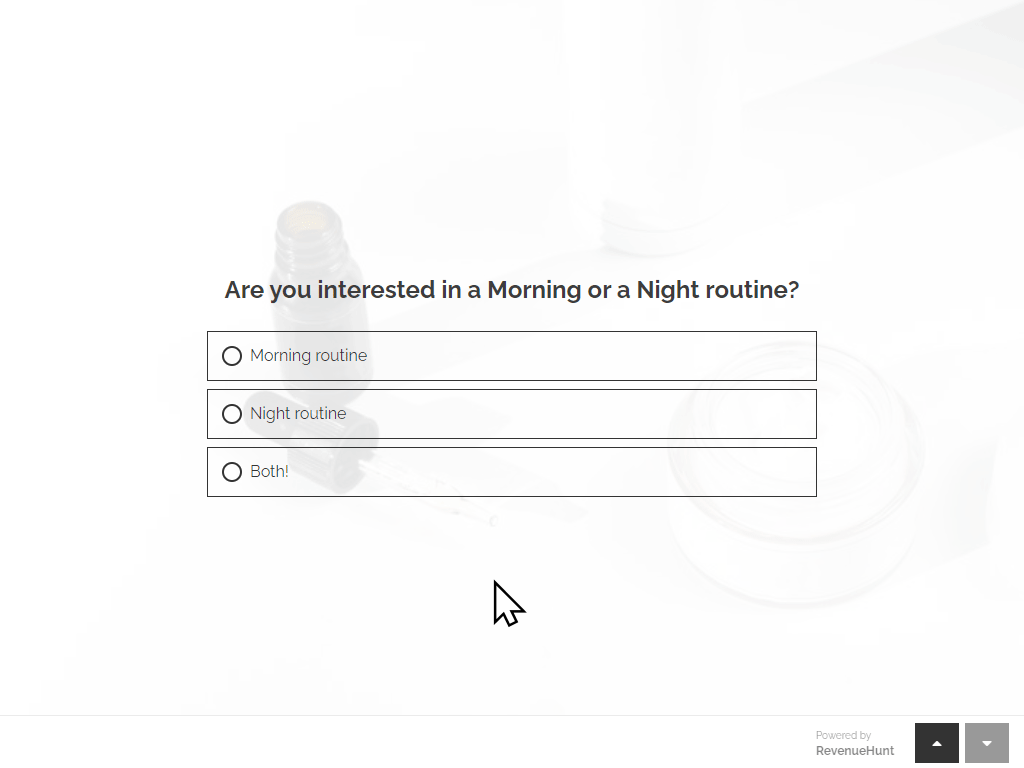
Now you know the secret to building a successful product selector tool.
Do you need help building your first Product Recommendation Quiz? Check our extensive FAQ section, watch a Tutorial Video or take the Support Quiz to reach out to us directly.
ecommerce marketing PRQ
